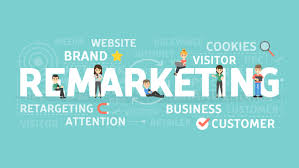With So Many Affiliate Programs, Which One Should I Choose?
The number one thing you need to do when looking into the myriad of affiliate programs available is to ask questions first before you join any program. You have to do the research about the choices of each program that you are thinking about joining. Get the answers before joining because they will be the deciding factors of what you will be achieving later on.
I have listed here some of the main questions that you need to ask any retailer offering an affiliate program.
“Will it cost me anything to join?” The majority of affiliate programs offered today are free of charge, so why pay for those that charge you something before joining? Unless there is only a very small fee and a very large ROI (Return On Investment), paying to be an affiliate just doesn’t make sense.
“When do they send out the commission checks?” Each program is different, so this is an important question. Some issue their checks once every month, every quarter, etc. Find the one that is best suited to your payment schedule choice. There are many affiliate programs that are setting a minimum earned commission amount that you must meet or exceed in order for them to issue you a check, so be sure to ask if they have a minimum.
With So Many Affiliate Programs, Which One Should I Choose?
“What is their hit per sale ratio?” This very important question tells you what the average number of banner or text link “hits” it takes to generate a sale. A “hit” occurs when someone clicks on the banner or text links. This is based on all affiliate statistics. This ratio is extremely important, as it will tell you approximately how much traffic you need to generate before you can start earning commissions from the sale.
“How will the referrals from my affiliate’s site be tracked and also how long do they stay in the system?” You need to have the confidence that the program will track the people you refer from your site. This is the only way that you will get credit for the sale. The period of time that your referrals stay in the system is also extremely important. The reason is because some visitors do not initially buy the product, but may want to return at a later time to make the purchase. You need to know if you are still going to get credit for the sale, even if it is done a few days or months from a certain day. Most programs track between 45 and 60 days, though some programs track referrals for as long as a year or more.
“What are the kinds of affiliate stats available?” The affiliate program you choose should be offering detailed statistics for your review. These should be available at anytime online. By constantly checking your individual stats, you know how many impressions, hits and sales are already generated from your site. “Impressions” are the number of times your banner or text links are viewed by the visitors of your site.
“Besides the commissions on sales, does the affiliate program also pay for hits and impressions?” It’s best if you can find a program where impressions and hits are also paid, as this will add to your earnings along with the sales commission. This is especially important if the program you are in offers a low sales point to be able to hit any ratio requirement they may have.
“Who is the online retailer you’ll be dealing with?” You need to find out whom you will be doing business with to know if they are a really solid company. Check out the products they are selling and the average sales amounts they are achieving. The more you know about the retailer offering the affiliate program, the easier it is for you to decide if that program is really the right one for you and your site.
With So Many Affiliate Programs, Which One Should I Choose?
“Is the program a one tier or two tier affiliate program?” A single tier affiliate program pays you only for the business you yourself generate. A two-tier program pays you for the business/sales you bring in, plus it also pays you a commission on the sales generated by any sub-affiliate you sponsor under you in the program. Some two-tier programs even pay a small fee for each new affiliate you sponsor. This is a recruitment fee, which usually only goes down one level.
Lastly, “what is the amount of commission paid?” Depending on which market you get into, you’ll find that 5% – 20% is fairly standard commission that most programs pay out. .01% – .05% is a typical amount paid for each hit. If you find a program that also pays you for banner/text-ad impressions, the amount paid is usually not much at all. As you can see from the figures above, you now understand why the average sales amount and hit to sale ratio is a very important fact to know about before getting into any affiliate program.
These are just some of the questions that need to be answered first before you join an affiliate program. You should also become familiar with the many important aspects that your chosen program has before incorporating them into your marketing campaign and website. Ask your affiliate programs these questions. They can help you select the right program for you and your site from among the many available.
My recommendation for one of the best Affiliate Commision sites going is Commision Junction. They have a wide variety of both affiliate programs and payouts. CJ is certainly worth a look if you want to get serious about this type of Affiliate Marketing.


